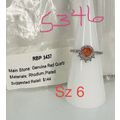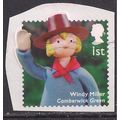Landseer, Edwin - The Stonebreaker and his Daughter - art postcard
- Condition : Used
- Dispatch : 2 Days
- Brand : None
- ID# : 72035777
- Quantity : 1 item
- Views : 285
- Location : United Kingdom

- Seller : justthebook (+1703)
- Barcode : None
- Start : Mon 13 Aug 2012 11:35:31 (EDT)
- Close : Run Until Sold
- Remain : Run Until Sold
Checks/Cheques
 for 1 item(s) edit
for 1 item(s) edit
Shipping Calculator
More Listings from This Seller view all
Seller's Description
- Art Postcard
- Work of art title: The Stonebreaker and His Daughter, 1830
- Artist (if known): Edwin Landseer
- Media or other details: oil painting
- Publisher / Gallery: Victoria & Albert Museum, c.1970s
- Postally used: no
- Stamp & postmark details (if relevant): na
- Size: modern
- Notes & condition details: very slight corner bend, hardly noticable
NOTES:
Size: 'Modern' is usually around 6in x 4in / 'Old Standard' is usually around 5 1/2in x 3 1/2in. Larger sizes mentioned, but if you need to know the exact size please ask.
All postcards are not totally new and are pre-owned. It's inevitable that older cards may show signs of ageing and use, particularly sent through the post. Any faults other than normal ageing are noted.
Stock No.:A288
------------------------------------------------
Postage & Packing:
UK (incl. IOM, CI & BFPO): 99p
Europe: GBP 1.60
Rest of world (inc. USA etc): GBP 2.75
No additional charges for more than one postcard. You can buy as many postcards from me as you like and you will just pay the fee above once. (If buying postcards with other things such as books, please contact or wait for invoice before paying).
Payment Methods:
UK - PayPal, Cheque (from UK bank) or postal order
Outside UK: PayPal only please (unless otherwise indicated). NO non-UK currency checks or money orders (sorry).
NOTE: All postcards are sent in brand new stiffened envelopes which I have bought for the task. These are specially made to protect postcards and you may be able to re-use them. In addition there are other costs to sending so the above charge is not just for the stamp!
----------------------------------------------
Text from the free encyclopedia WIKIPEDIA may appear below to give a little background information:
*************
Sir Edwin Henry Landseer, RA (7 March 1802 � 1 October 1873) was an English painter, well known for his paintings of animals�particularly horses, dogs and stags. The best known of Landseer's works, however, are sculptures: the lions in Trafalgar Square, London.
Landseer was born in London, the son of the engraver John Landseer A.R.A...[1] He was something of a prodigy whose artistic talents were recognised early on. He studied under several artists, including his father, and the history painter Benjamin Robert Haydon, who encouraged the young Landseer to perform dissections in order to fully understand animal musculature and skeletal structure. Landseer's life was entwined with the Royal Academy. At the age of just 13, in 1815, he exhibited works there. He was elected an Associate at the age of 24, and an Academician five years later in 1831. He was knighted in 1850, and although elected President in 1866 he declined the invitation.
In his late 30s Landseer suffered what is now believed to be a substantial nervous breakdown, and for the rest of his life was troubled by recurring bouts of melancholy, hypochondria, and depression, often aggravated by alcohol and drug use.[2] In the last few years of his life Landseer's mental stability was problematic, and at the request of his family he was declared insane in July 1872.
Landseer was a notable figure in 19th century British art, and his works can be found in Tate Britain, the Victoria and Albert Museum, Kenwood House and the Wallace Collection in London. He also collaborated with fellow painter Frederick Richard Lee.
Landseer's popularity in Victorian Britain was considerable, and his reputation as an animal painter was unrivalled.[1] Much of his fame � and his income � was generated by the publication of engravings of his work, many of them by brother Thomas. [3]
His appeal crossed class boundaries: reproductions of his works were common in middle-class homes, while he was also popular with the aristocracy. Queen Victoria commissioned numerous pictures from the artists. Initially asked to paint various royal pets, he then moved on to portraits of ghillies and gamekeepers, Then, in the year before her marriage, the queen commissioned a portrait of herself, as a present for Prince Albert.[4] He taught both Victora and Albert to etch,[5] and made portraits of Victoria's children as babies, usually in the company of a dog.[6] He also made two portraits of Victoria and Albert dressed for costume balls, at which he was a guest himself.[7] One of his last paintings was a life-size equestrian portrait of the Queen, shown at the Royal Academy in 1873, made from earler sketches.[8]
Landseer was particularly associated with Scotland, which he had first visited in 1824,[9] and the Highlands in particular, which provided the subjects (both human and animal) for many of his important paintings, including his early successes The Hunting of Chevy Chase (1825�6) and An Illicit Whiskey Still in the Highlands (1826�9), and his more mature achievements such as the majestic stag study Monarch of the Glen (1851) and Rent Day in the Wilderness (1855�68).[citation needed] In 1828 he was commissioned to produce illustrations for the Waverley Edition of Sir Walter Scott's novels,[9]
So popular and influential were Landseer's paintings of dogs in the service of humanity that the name Landseer came to be the official name for the variety of Newfoundland dog that, rather than being black or mostly black, features a mix of both black and white; it was this variety Landseer popularised in his paintings celebrating Newfoundlands as water rescue dogs, most notably Off to the Rescue (1827), A Distinguished Member of the Humane Society (1838), and Saved (1856), which combines the Victorian conception of childhood with the appealing idea of noble animals devoted to humankind�a devotion indicated, in Saved, by the fact the dog has rescued the child without any apparent human involvement.
Laying Down The Law (1840) satirises the legal profession through anthropomorphism. It shows a group of dogs, with a poodle symbolising the Lord Chancellor.[10]
His painting The Shrew Tamed, entered at the 1861 Royal Academy Exhibition, caused controversy because of its subject matter. It showed a powerful horse on its knees among straw in a stable while a lovely young woman lies with her head pillowed on its flanks, lightly touching its head with her hand. The catalogue explained it as a portrait of a noted equestrienne, Ann Gilbert, applying the taming techniques of the famous 'horse whisperer' John Solomon Rarey.[11] Critics however were troubled by the depiction of a languorous woman dominating a powerful animal, and some concluded Landseer was referencing the famous courtesan Catherine Walters, then at the height of her fame.[12] Walters was herself an excellent horsewoman and along with other 'pretty horsebreakers' frequently appeared riding in Hyde Park.
Some of Landseer's later works, such as his Flood in the Highlands and Man Proposes, God Disposes (both of 1864) are pessimistic in tone,[1] the latter showing two polar bears toying with the bones of the dead, and other remains, from Sir John Franklin's failed arctic expedition.
type=printed postcards
Listing Information
| Listing Type | Gallery Listing |
| Listing ID# | 72035777 |
| Start Time | Mon 13 Aug 2012 11:35:31 (EDT) |
| Close Time | Run Until Sold |
| Starting Bid | Fixed Price (no bidding) |
| Item Condition | Used |
| Bids | 0 |
| Views | 285 |
| Dispatch Time | 2 Days |
| Quantity | 1 |
| Location | United Kingdom |
| Auto Extend | No |

















